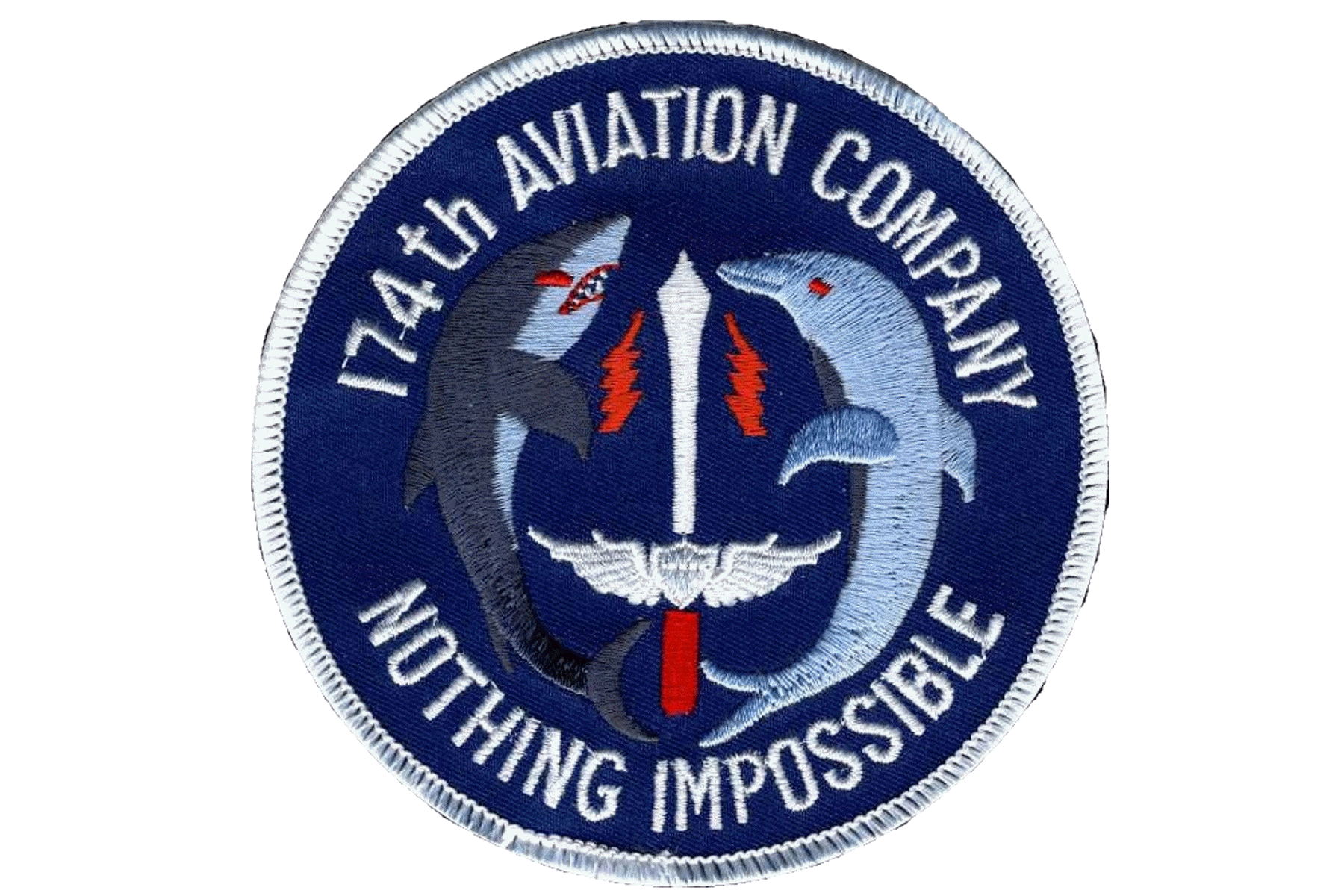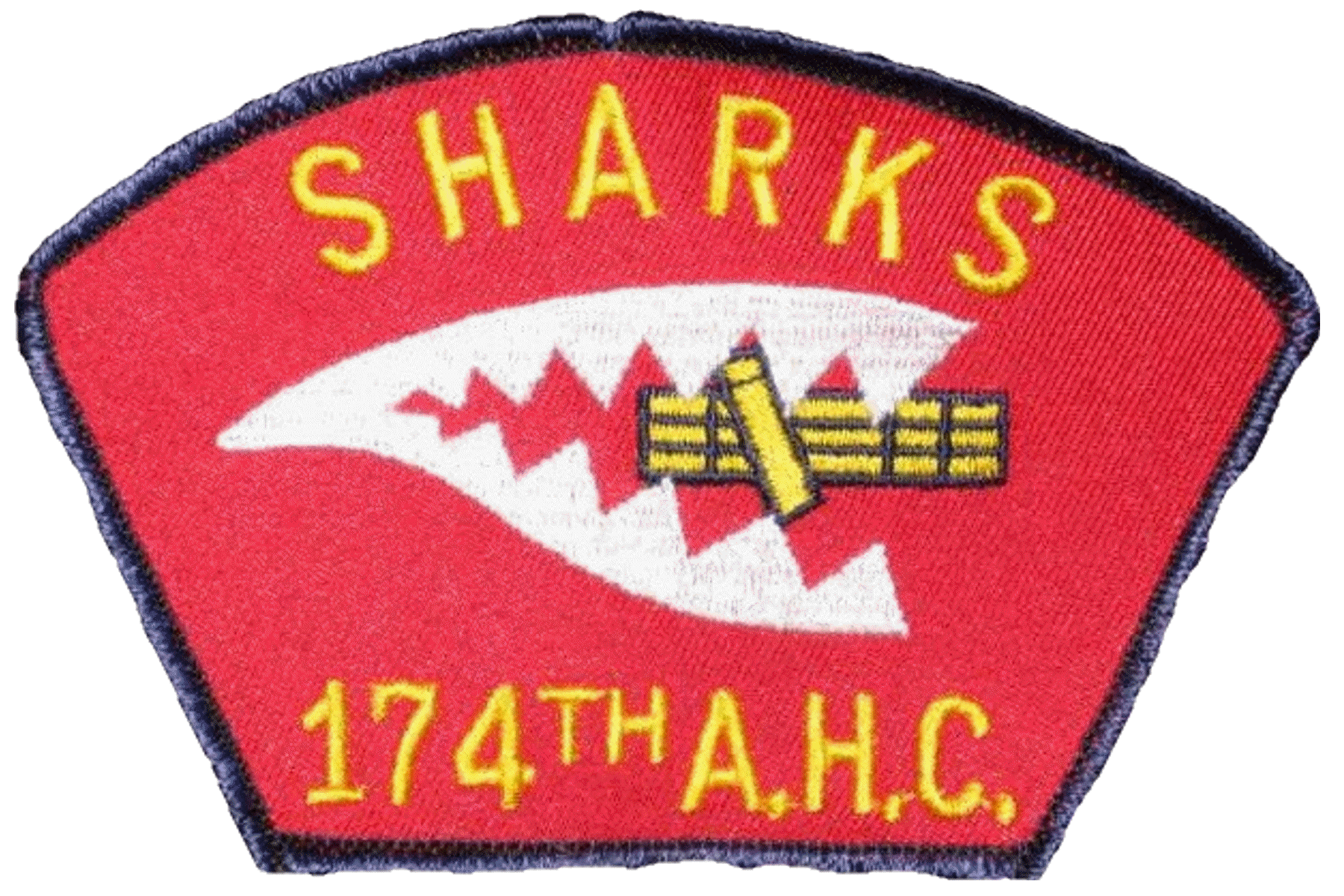174th Assault
Helicopter Company
DOLPHINS & SHARKS
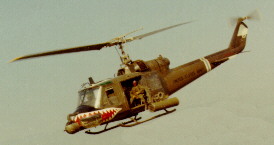
174th Assault Helicopter Company
DOLPHINS & SHARKS
174th History -- 1968, Part 4 |
OPERATION VERNON LAKE II |
The last two months of the year were two of the most demanding and challenging in the history of the 174th. Operation Vernon Lake II was originated in the mountainous region northwest of Duc Pho. Initially, the 174th inserted the 1st Battalion, 20th Infantry, onto a hilltop approximately 10 miles south of Ha Than Special Forces Camp. This hilltop became LZ Cork. At the same time, the 174th put the 4th Battalion, 21st Infantry, on a 2500 foot peak five miles west of Minh Long Special forces Camp. This support base, LZ Amy, became a center of 174th activity.
November third was a preview of things to come. While flying a command and control mission, WO John O’Sullivan spotted concrete reinforced bunkers, freshly dug trenches, and barbed wire, all part of an NVA base camp. In the following weeks, the 174th aided ground units in locating, reconning, and destroying more than 80 enemy base camps, training sites, and headquarters.
On 15 November, WO Walter Seger was instrumental in uncovering one of the largest base camps. Troops of the 4th Battalion, 21st Infantry, being directed by WO Seger’s command and control ship, found an enemy strategic headquarters eight miles west of LZ Amy. The complex had an assembly center capable of seating 200 people, with two and three story buildings. The camp had been so recently used that the troopers found still-burning fires and laundry put out to dry, plus hastily-hidden enemy documents.
On 18 November, while reconning an area where a Marine F-4 Phantom fighter jet had been shot down with the pilot still missing, Dolphin 428 came under enemy fire. The ship took more than 15 hits. Although critically wounded, Specialist Fifth Class Wayne Tice, crewchief on 428, returned fire until the ship was out of the area. Specialist Tice was medevaced to Chu Lai but later died of his wounds. In recognition of his gallantry, he was awarded the Distinguished Flying Cross, posthumously.
The 174th came under a new policy regarding aircraft flying time on 13 November. Because of excessive utilization of aircraft by ground commanders, aircraft were constantly grounded for maintenance because of excessive hours they had flown. The new system allotted each battalion 12 hours each day to be divided between its utility and command and control ship. This system led to better use of the aircraft, less maintenance time, and also cut down on the number of aviators who were exceeding the 140 hour monthly limitation.
Captain Albert J. Schmitt arrived at the 174th on 8 November and assumed the duties as Executive Officer. First Lieutenant Harry Schindehette took over as Operations Officer, and First Lieutenant Ronald Nobles replaced Captain Grant Cayton as commander of the 409th TIC Detachment.
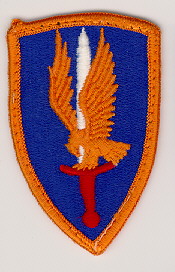
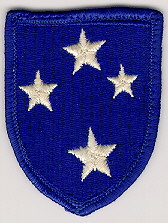 On 1 December the 174th, along with the rest of the 14th Combat Aviation Battalion, was reassigned from the 1st Aviation Brigade and became part of the Americal Division. The switch from the “Hawk” to the “Southern Cross” went smoothly and involved few changes. The 409th TC Detachment and the 452nd Signal Detachment were infused into the 174th itself. Maintenance came under control of the service platoon, with Captain Thomas Larkin in charge.
On 1 December the 174th, along with the rest of the 14th Combat Aviation Battalion, was reassigned from the 1st Aviation Brigade and became part of the Americal Division. The switch from the “Hawk” to the “Southern Cross” went smoothly and involved few changes. The 409th TC Detachment and the 452nd Signal Detachment were infused into the 174th itself. Maintenance came under control of the service platoon, with Captain Thomas Larkin in charge.
During the year, many improvements were made in the company area. All living quarters were bunkerized, and Officers, NCO, and EM Clubs were built. The office space in the Orderly Room was nearly doubled, with a mail room and library being added. The supply room was expanded and a new arms room built.
1968 was an eventful year in the short but proud history of the 174th. It was also a busy one. The Dolphins transported nearly 200,000 passengers and flew more than 25,000 hours. It was a big job, but the 174th was equal to the task. The new year will present new challenges, but the Dolphins and Sharks will show, as they have in the past, that there is “NOTHING IMPOSSIBLE.”
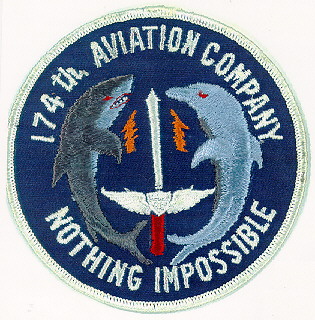
![]() Return to top of: This page.
Return to top of: This page.
![]() Return to top of: 1968 history page.
Return to top of: 1968 history page.
![]() Return to top of: Home Page.
Return to top of: Home Page.
